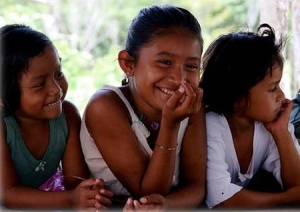This year’s World AIDS Day is about “Getting to Zero” by 2015 – Zero AIDS Related Deaths, Zero New Infections and Zero Discrimination. This will not happen and millions of people will die unnecessarily unless more governments do the right thing and live up to the financial pledges they have made.
2011 saw unprecedented progress in science, political leadership and results in the AIDS response, but that now looks to be ripped apart as a major financial crisis hits the sector.
This year’s global AIDS Report demonstrates that treatment scale-up is beginning to deliver results, both in averting AIDS-related deaths (an estimated 2.5 million since 1995) and in halting new infections (at their lowest levels since 1997).
World AIDS Campaign Chair, Allyson Leacock said: “Just when we should be increasing our efforts to achieve universal access to treatment, we are tearing apart the progress made and losing momentum in the HIV response.”
Her comments came as the Global Fund to fight against AIDS, Tuberculosis and Malaria announced its intention to scrap the next funding round in face of a ten billion dollar shortfall. While transitional finance is expected to provide for the continuation of services currently financed, this decision postpones any possibility of new funding until 2014.
“Round 11 funds would have enabled scale-up of lifesaving treatment and prevention services for HIV, TB and malaria to millions of people in developing countries,” Ecumenical Advocacy Alliance Executive Director Peter Prove said. “People currently dying for lack of access to treatment and prevention have been betrayed – just when the science is showing that the end of AIDS is within our grasp.”
But rather than building on the new evidence that AIDS treatment saves lives and prevents new infections, and scaling up treatment programs to try to end this epidemic, many donor governments are now seemingly turning their backs on millions of the world’s poorest and most marginalized people.
The International Treatment Preparedness Coalition says funding for HIV had already begun to flat line at the end of the last decade. Last year the Global Fund failed to raise the minimum $13 billion that was needed to maintain its current programmes. And of the overall $20 billion target, it raised roughly one-half, with $11.5 billion secured in pledges. In a challenging year the Global Fund also faced mixed publicity as it unearthed some misuse of funds by recipients in a small number of countries.
The reduced funding capacity indicates a worrying slow-down in international commitment to the global AIDS response. Several donors have since reneged on their pledges or delayed in converting their pledges to cash.
The AIDS epidemic is far from over, but with a sustained commitment to comprehensive treatment, prevention and care services, it is still possible in our lifetime to create an AIDS-Free Generation.
We call on world leaders to live up to their promises and find the funds so “Getting to Zero” is more than a slogan.
For more information please contact:
World AIDS Campaign International World AIDS Campaign
38 Hout Street 20
Cape Town, South Africa 1013
Source: http://www.worldaidscampaign.org
 Buku restaurant and 4 the World partnered on December 1, 2012 World AIDS Day at Raleigh Winterfest to bring HIV awareness to the local community as well as the international community. Winterfest patrons indulged in a cup of rich Belgium hot chocolate or steaming Mexican pozole knowing that $1 of every purchase would help HIV prevention in Central America.
Buku restaurant and 4 the World partnered on December 1, 2012 World AIDS Day at Raleigh Winterfest to bring HIV awareness to the local community as well as the international community. Winterfest patrons indulged in a cup of rich Belgium hot chocolate or steaming Mexican pozole knowing that $1 of every purchase would help HIV prevention in Central America.


